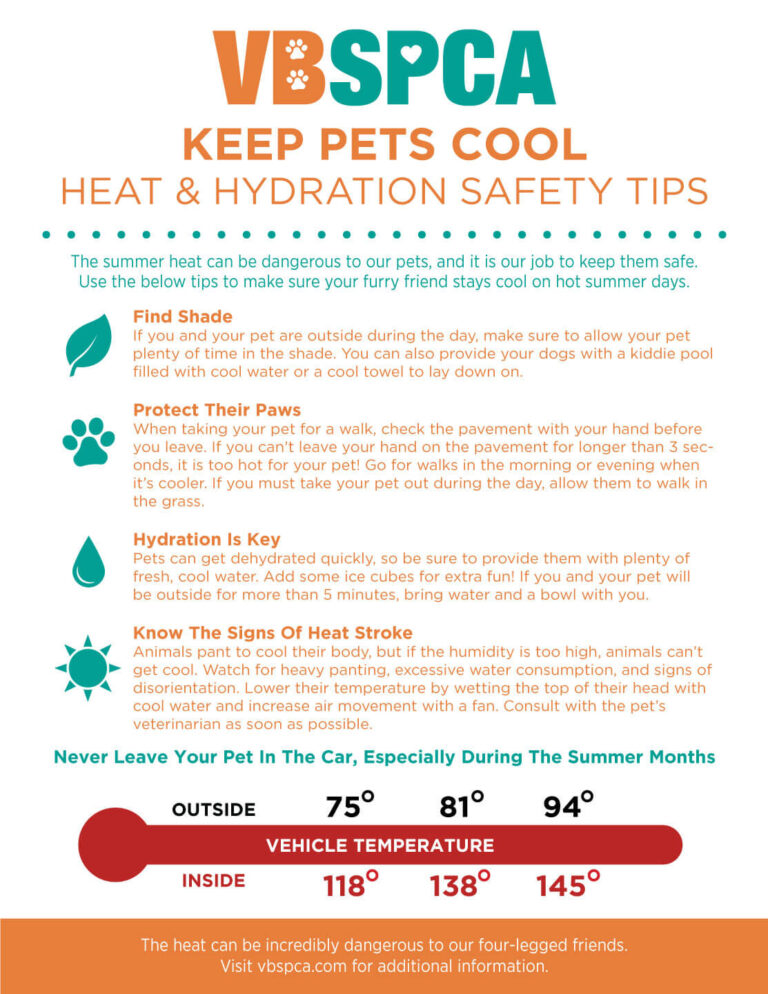Dogs should not walk when the temperature is above 68°F (20°C) on pavement during hot weather.

Credit: www.facebook.com
Understanding The Risks
Temperatures above 68°F can be too hot for dogs to walk, especially on pavement during summer days. It is essential to consider their safety and well-being in hot weather conditions.
The Dangers Of Walking Dogs In Hot Weather
Walking dogs in hot weather can pose serious risks to their health and well-being. Dogs are more susceptible to heat exhaustion and heat stroke compared to humans, as they cannot cool themselves as efficiently. As responsible pet owners, it is crucial to understand the potential dangers and take necessary precautions to keep our furry friends safe in the heat.
The Impact Of Temperature On Dogs’ Paws
The temperature of the pavement can have a significant impact on a dog’s paws. Dogs’ paw pads are sensitive and can easily burn when walking on hot surfaces. As a general rule, if the pavement is too hot for you to comfortably place your hand on it for a few seconds, it is definitely too hot for your dog’s paws. It’s important to remember that pavement temperature can vary depending on the time of day and weather conditions, so it’s crucial to be mindful of the temperature before taking your dog for a walk.
Recognizing Signs Of Overheating In Dogs
It’s essential to be aware of the signs of overheating in dogs to take prompt action and prevent any harm to their health. Some common signs of overheating in dogs include excessive panting, drooling, weakness, rapid heartbeat, and vomiting. If you notice any of these symptoms during your dog’s walk in hot weather, it is imperative to immediately find a shady spot, provide them with cool water, and seek veterinary assistance if necessary.
To ensure the well-being of our furry companions, it’s crucial that we understand the risks associated with walking dogs in hot weather. By being aware of the dangers, monitoring pavement temperature, and recognizing signs of overheating, we can take the necessary steps to keep our dogs safe and comfortable during their walks.

Credit: www.amazon.com
Determining The Temperature Limit
Walking your dog is a great way to keep them active and healthy, but it’s important to ensure their safety, especially when it comes to hot weather. Dogs are more susceptible to heat stroke than humans, and the pavement can become scorching hot, burning their paws. Therefore, it’s crucial to understand the temperature limits for dog walking to prevent any potential harm to your furry friend. Determining the temperature limit can be based on various factors, such as the recommended temperature limits, factors to consider for walking dogs in summer, and the alternative of nighttime walking.
Recommended Temperature Limits For Dog Walking
When it comes to dog walking, it’s essential to be aware of the recommended temperature limits to ensure your furry friend’s safety. As a general guideline, experts recommend avoiding walks when the temperature is above 68°F (20°C). However, keep in mind that this is just a rough estimate and can vary based on factors like humidity and your dog’s breed. Some dogs, such as Siberian Huskies, Chihuahuas, and Labrador Retrievers, may tolerate higher temperatures better than others. It’s crucial to understand your dog’s individual needs and limitations.
Factors To Consider For Walking Dogs In Summer
Walking dogs in the summer requires careful consideration of various factors to protect them from the heat. Some key factors to keep in mind include:
- Your dog’s breed: Certain breeds are more prone to heat exhaustion and need extra caution in hot weather. Breeds like Basenjis, German Shorthaired Pointers, and Vizslas have a harder time regulating their body temperature, so they need to be kept cool and hydrated.
- Pavement temperature: The pavement can become extremely hot during summer, making it uncomfortable and potentially harmful for your dog’s paws. Before taking your dog out for a walk, check the pavement temperature by placing the back of your hand on it. If it’s too hot for you, it’s too hot for your dog.
- Time of day: It’s best to avoid walking your dog during the hottest parts of the day, typically between 10 a.m. and 4 p.m. Instead, opt for early morning or late evening walks when the temperature is cooler.
- Shade and water availability: Plan your walking route to include plenty of shady areas and water sources for your dog to stay hydrated and cool throughout the walk.
Nighttime Walking: A Cooler Alternative
If the temperature during the day is too hot for your dog to handle, nighttime walking can be a safer alternative. The cooler temperatures provide a more comfortable environment for your furry friend, reducing the risk of heat-related illnesses. However, ensure that the area you choose for nighttime walks is well-lit and safe for both you and your dog.
In conclusion, determining the temperature limit for dog walking involves considering various factors, including breed-specific needs, pavement temperature, and the availability of shade and water. It’s crucial to prioritize your dog’s safety and well-being to prevent heat-related illnesses. Remember, when in doubt, always consult with your veterinarian for personalized recommendations.
Protecting Your Dog
Walking your dog in hot weather can be dangerous. It’s important to know the temperature limit, preventing heat exhaustion or burn injuries. Always check the pavement temperature and aim for early morning or late evening walks when it’s cooler.
Tips For Walking Dogs In Hot Weather
When it comes to walking your dog in hot weather, it’s essential to take precautions to protect your furry friend from the heat. Here are a few tips to keep in mind:
- Choose the Right Time: Schedule walks during the coolest parts of the day, such as early morning or late evening.
- Check the Pavement: Before heading out, touch the pavement with your hand. If it’s too hot for your hand, it’s definitely too hot for your dog’s paws.
- Protective Accessories: Consider purchasing booties to protect your dog’s paws from hot pavement. You can also invest in sun-protective clothing, especially for dogs with thin coats or light-colored fur.
- Hydration is Key: Make sure to bring along plenty of water for both you and your dog. Offer regular breaks for your dog to drink and cool down.
- Watch for Signs of Overheating: Keep a close eye on your dog for signs of overheating, such as excessive panting, drooling, trouble breathing, weakness, or collapse. If you notice any of these symptoms, seek veterinary care immediately.
Choosing The Right Time And Surface For Walks
Walking your dog in hot weather requires careful consideration of both the time and surface. Here’s what you should keep in mind:
- Time of Day: As mentioned earlier, it’s best to choose cooler times of the day for walks, such as early morning or late evening.
- Avoid Direct Sunlight: If possible, try to walk your dog in shaded areas to minimize sun exposure and reduce the risk of overheating.
- Grass and Trails: Whenever possible, opt for grassy areas or shaded trails for your walks. These surfaces are generally cooler than pavement and provide a more comfortable experience for your dog.
- Consider Indoor Alternatives: On extremely hot days, consider engaging your dog in indoor exercises or activities. This could include playing fetch in an air-conditioned space, practicing obedience training, or using interactive toys to keep them mentally stimulated.
Alternative Exercises And Indoor Activities
When the weather is too hot for outdoor walks, there are plenty of alternative exercises and indoor activities that can keep your dog active and entertained. Here are a few options:
- Swimming: If your dog enjoys water, swimming is a fantastic low-impact exercise that can help keep them cool.
- Treadmill Workouts: Invest in a dog-friendly treadmill and train your dog to walk or jog on it. This is a convenient option, especially for dogs with high energy levels.
- Puzzle Toys: Keep your dog mentally stimulated by providing puzzle toys or treat-dispensing toys that require them to work for their rewards.
- Indoor Agility: Set up an agility course indoors using household items like cones, tunnels, and jumps. This can be a fun and challenging way to exercise your dog’s mind and body.
Remember, your dog’s safety and well-being should always come first. By following these tips and making wise choices for walking your dog in hot weather, you’ll ensure that they stay happy, healthy, and protected.

Credit: www.marinaanimalclinic.com
Frequently Asked Questions Of What Temperature Is Too Hot For Dogs To Walk
Is 80 Degrees Too Hot To Walk A Dog?
Yes, 80 degrees is too hot to walk a dog. Dogs are susceptible to heatstroke and their paws can get burned on hot pavement. It’s best to walk them early in the morning or late in the evening when it’s cooler.
Can Dogs Walk In 90 Degree Weather?
Dogs should not walk in 90 degree weather because it can be too hot for their paws and can lead to heatstroke. It is important to consider the temperature of the pavement and provide plenty of water and shade for your dog during hot weather.
What Temperature Should You Not Walk Your Dog In?
It is too hot to walk your dog when the temperature exceeds 68°F (20°C) and it’s especially important to avoid walking in hot weather during the summer. Also, be cautious of walking on pavement as it can get even hotter, potentially causing harm to your pet’s paws.
What Temperature Is Too Hot To Walk Dogs Paws?
Dogs’ paws can be harmed at temperatures above 68°F. It’s important not to walk dogs on pavement when it’s too hot to avoid burns.
Conclusion
Walking your dog in extreme heat can be dangerous and harmful to their health. It’s important to be aware of the temperature and take precautions to keep your furry friend safe. Avoid walking your dog when the pavement is hot, as it can burn their paws.
Additionally, be mindful of the temperature during summer months, especially at night. Remember, your dog relies on you to keep them safe, so always prioritize their well-being when it comes to hot weather walks.



